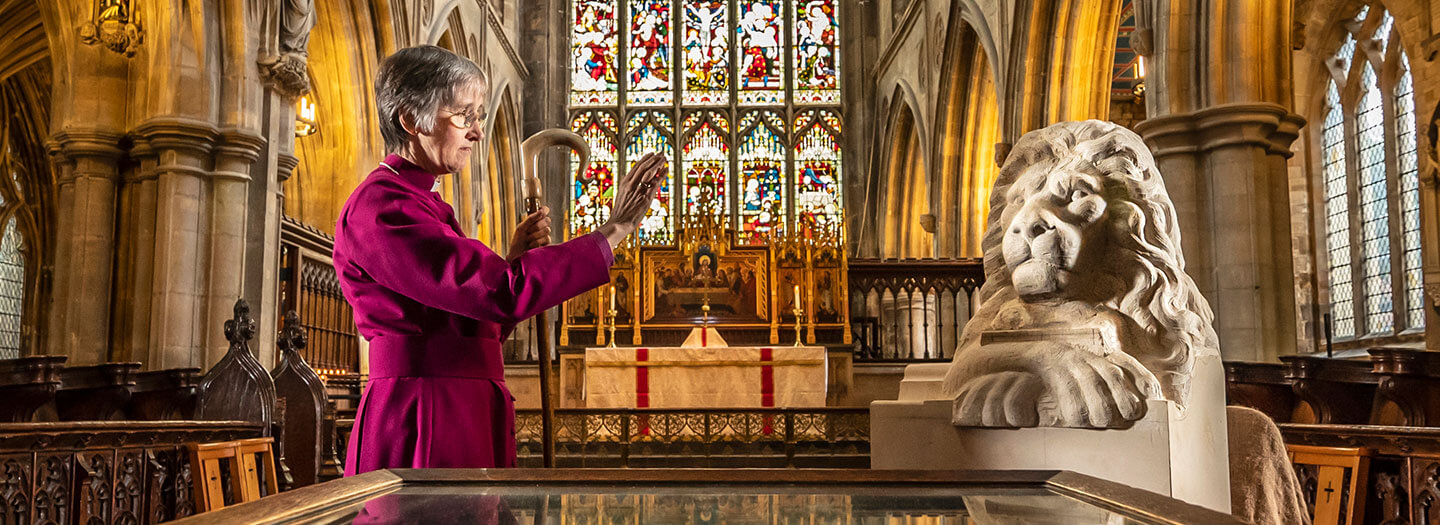
The Bishop of Hull Alison White during a photocall as she blesses a statue of Aslan, a character from the Chronicles of Narnia by CS Lewis, at St Mary's Church in Beverley, East Yorkshire on Monday August 17, 2020. Credit: Danny Lawson/PA Wire URN:55037853 (Press Association via AP Images)
St. Mary’s Church in Yorkshire, England, dates back to the twelfth century and was, at one time, known for its various sculptures and carvings. As Claire Bugos writes, that may soon be the case once again.
The centuries have not been kind to the more than six hundred statues and carvings that have adorned the church over the course of almost a millennia of existence, and the church will soon embark upon a ten-year restoration in the hopes of restoring much of what was lost.
The first step, however, is replacing various statues that were worn beyond recognition or repair with fourteen limestone sculptures depicting characters from C. S. Lewis’ The Chronicles of Narnia.
Aslan, the White Witch, Reepicheep, and others will soon welcome visitors to the church, with the hope that those who come to see the beloved figures will stay to learn more about our beloved savior.
As Reverend Becky Lumley, the vicar of St. Mary’s, described, Lewis’ books “are not just for children, they contain incredible truth which helps many Christians today reflect on our own understanding of God and faith.”
After all, art has long served an important function in helping people understand the Lord.
Roland Deller, director of development at St. Mary’s, pointed out that the primary reason the church had so many statues and sculptures in the first place is because they were “a way of storytelling without words, created in a world which had a high level of illiteracy.”
Your life is God’s artwork
Art was a common way of bridging the gap to understanding throughout the Middle Ages, and generations of people came to understand the basics of the gospel as a result.
As Christians, our lives are meant to serve a similar purpose.
Peter and John, for example, were known by the religious leaders to have been with Jesus because of their boldness in defending Christ as much as by the content of what they said (Acts 4:5–13). The manner in which they spoke and lived made their connection to Jesus unmistakable, even to those who wanted nothing more than to ignore them.
Can the same be said for us?
When people interact with us, regardless of the context, do they come away with an awareness that something’s different?
Is there any part of our day-to-day existence in which we make it simple for those around us to ignore God’s presence in our lives?
Our culture is growing increasingly illiterate when it comes to the truths of the gospel. As such, if we want them to know Jesus, our lives must point them toward the Lord.
How will your life accomplish that today?












